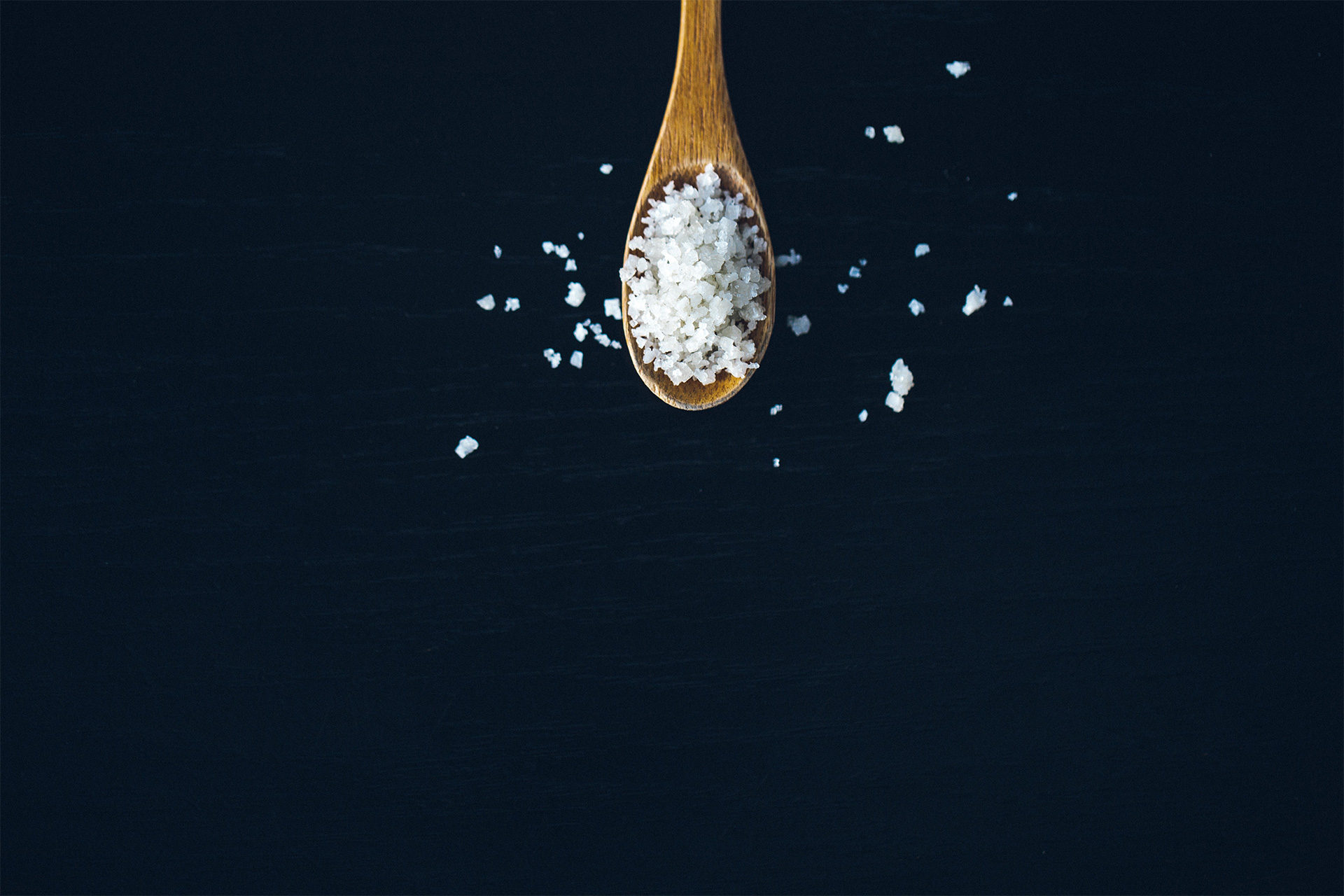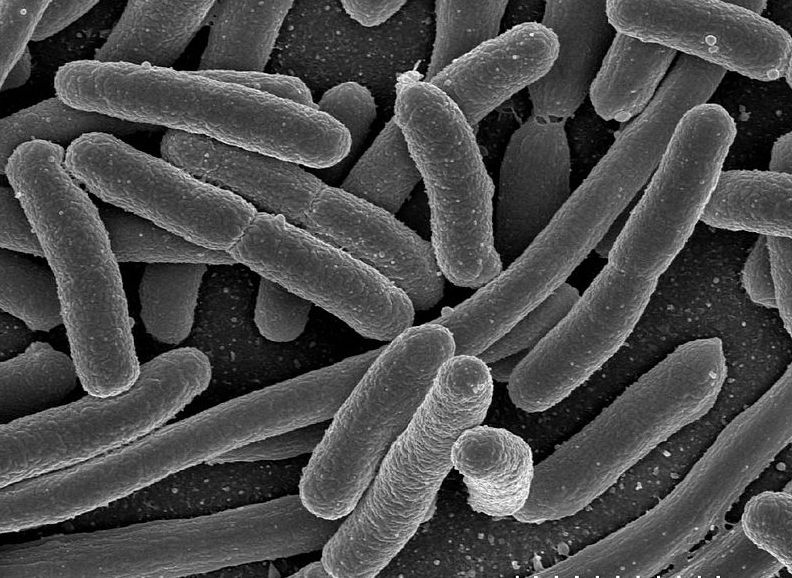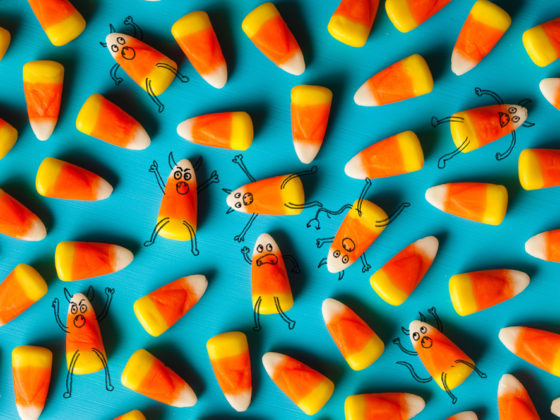Some people have done a Fast-5 diet schedule of intermittent fasting (19 hours of fasting with a moveable 5-hour eating window) without seeing appetite correction (AC) or the weight loss that follows it. I’ve wondered what dietary gremlin might be keeping their appetite center (appestat, for short) from working properly, but until recently, haven’t had anything new to offer.
What’s Confusing Your Appetite?
Sugar is a likely suspect since the increase in its use in the United States roughly parallels the rise of obesity. However, sugar doesn’t doesn’t seem to play a big role in the people I’m talking about. They’ve tried that. There’s another food additive that was scarce at the beginning of the last century and is common now: Salt. Salt is made of two elements: sodium (39% by weight) and chlorine (61 percent).
Sodium is one of the main electrolytes that makes our bodies work. If you have too much in your blood, you die. If you have too little of it, you die. One of the important things that kidneys do (with help from a number of other body parts) is keeping the sodium level in the blood where our bodies need it. They pull excess sodium from the blood and throw it out in the urine.
Why might we think salt could be a player? A 2018 study of adults in the US found that high sodium intake correlates with obesity. That doesn’t mean high sodium intake causes obesity, though. It could be that many people who are obese just don’t pay much attention to their diet and eat a lot of salt along with a lot of calories, and the scientists running the test couldn’t sort it all out (though they did try.)
The appetite for salted chips or nuts may seem endless compared to that for unsalted ones, so you know salt does something to appetite. It’s easy to see how too little sodium could have an effect: We humans, like other animals, have three separate appetites or drives:
- energy and protein (hunger)
- water (thirst)
- salt (salt appetite or a salt craving)
These three appetites are all controlled in the same very small part of the brain, the hypothalamus. If the salt appetite were to get a little excited from low sodium, it’d be easy to see how cross talk from the salt appetite center could drive the food appetite along with it. Some people report similar cross talk between thirst and hunger when they find drinking water makes their hunger for food go away.
Why Can’t You Eat Just One (Salty) Chip?
What’s the difference between eating an unsalted chip and a salty one? The unsalted chip stimulates taste buds, and the chewing and swallowing tell the brain and gut to expect some food on the way, just like the salty one. What’s different about the salty chip?
When the chip is salted, it changes things. The taste—which is mostly salt, even if it’s sour cream and onion, barbecue, or plain—immediately generates a sustained appetite for more chips. This happens fast—before the first chip even hits the stomach. What happened?
The salty taste gets sent to the brain. A long time ago, sodium was a critical need. It was scarce for anyone who didn’t live near the ocean, the Great Salt Lake or a neighbor with a Himalayan salt lamp. That’s why we and other animals have an appetite just for salt. As it does with limbic hunger, the brain says “A-ha! You found something salty! This stuff is scarce! We need it! Get more while you can! So it tells the appetite center to keep going until the bag of chips is gone and we’re feeling remorseful about our lack of self-control.
This theory wouldn’t hold water until recently, because it was thought that the kidneys, which control sodium levels in the blood, could only waste sodium. They couldn’t store it, so there would be no point in eating an excess. Any extra sodium would be peed right out. It was thought that the kidneys directly controlled the sodium level in the blood, and by doing that, indirectly controlled sodium levels for all the water in the body:
- water in the blood vessels (intravascular)
- water not in the blood vessels (extravascular)
- water that’s not in the blood and not in cells (interstitial)
- water that’s in cells (intracellular)
Recently, researchers have found that sodium is stored right under our noses—and on our noses, and everywhere else we have skin. The skin stores sodium, and can release it back into the blood if it’s needed. It’s almost never needed, so it just builds up in the skin.
What Do I Do with this News?
Adults who aren’t pregnant, lactating or sweating need less than 150 mg (milligrams) of sodium daily, yet the average intake is 3400 mg — more than 20 times what’s needed. Men tend to have a higher appetite for salt than women. A teaspoon of salt is 2300 mg, so the typical intake is a teaspoon and a half daily.
As a study of one, it might make sense to try a low-sodium diet if you’re having trouble losing fat on a appetite-correcting eating schedule like Fast-5. There’s a big problem, though. Cutting salt a little is easy, but cutting it way down is really hard to do. It’s not something to take on unless you’re stuck and Fast-5 with a reasonable mix of foods isn’t working for you. Most of the salt we take in is already added to foods before we buy them, and it’s everywhere! Virtually every sauce, dressing, and spice mix has salt in it. Bread has it in the form of baking soda (sodium bicarbonate). Raw meats naturally have a little sodium in them, but some brands pump in more. Eggs naturally have some sodium in them, too, but if egg sellers could find a way to do it without cracking the shells, they probably would.
That’s not surprising. Salt adds a huge amount of flavor to foods and acts as a preservative. You have to load on a lot of other spices to match salt’s contribution to flavor. That can get expensive. Salt’s not quite cheaper than dirt, but it’s close. If you want to cut down on sodium, where do you start? These are the American Heart Association’s “salty six.”
- breads and rolls
- pizza
- sandwiches
- cold cuts and cured meats
- soup
- burritos and tacos
These can all be made without salt, but restaurants don’t dare make things that way. You’ll find very few low-sodium choices in most restaurants, so it may be easiest to steer clear of them. For things without a decent substitute (e.g., bacon, a cured meat), you can have them less often or in smaller quantities. Even the ingredients to make things on the list (such as the bread, tomato sauce and cheese in pizza and the vegetable or chicken broth in a soup) come loaded with salt, so to really cut sodium to the lowest possible level, you’d have to make your own. Making cheese is a job (and maybe an art) in itself. The other ingredients can be a real pain to make from scratch, so instead of making your own :
- Look for low-salt and no-salt versions.
- Ask your grocery store manager to stock low-salt and no-salt products.
- Ask an independent baker to hold back on the salt for a batch.
Flavoring up things without adding salt takes some experimenting to see what suits your taste. Some starter spices that can add layers of taste include:
- black pepper
- chili pepper
- cayenne pepper
- dill
- paprika
- garlic
- rosemary
- thyme
- oregano
- turmeric
- curry
- onion powder
- cumin
- vinegar
You can also use less of the salty stuff. I know: Less cheese on a pizza? That’s heresy! But intermittent fasting used to be heresy, too!
How Do I Do a Study of One?
It’s hard to say how low your sodium intake would have to be to a difference. The level recommended by the American Heart Association—1,500 mg per day—is a good goal. It’s about a 60 percent cut from what most of us eat. If you see some benefit, it may encourage you to strive for a lower goal.
Like most things, it’ll take about three weeks for a change like this to show you whether it’s going to have a helpful effect or not.
What Should I Expect?
How much weight comes off depends on how much sodium you currently take in. As your kidneys dump the excess, some water may follow. That may make you lose a pound or two in the first few days. After an adjustment period of a week or two at the least, if the lower sodium intake is having a positive effect on your appetite, you’ll see gradual weight loss at the usual pound-per-week rate seen with appetite correction. Arranging and getting used to a lower-sodium diet may take some time, practice, and experimenting, so taking a gradual approach instead of switching immediately to 1,500 mg/day is perfectly reasonable.
Do You Have Anything Else to Add?
Na.
But maybe you do! Please comment on your experience, whether you see help with appetite correction (AC) or not.



16 comments
I’ve been doing fast 5 for 6 weeks now and noticed that I am feeling stronger in my evening workouts if I take an electrolyte pill that has sodium in it also. I only take them when expect to sweat more or going to have sauna sessions in the evening. I guess with my stable 0.5kg a week weight loss I don’t need to be worried about my sodium intake? I usually put loads of salt in my morning porridge too. Kind of feels like when not eating loads of greens (winter) I always crave more salt. I fast from 2pm onwards.
When a change is temporary and it gets your body to a healthier place, where it hopefully will stay long-term, then it’s okay to have less concern about that short-term adjustment. Your body’s very good about keeping the sodium it needs, so as soon as you can taper it, the better.
Great Article Dr Bert!
Fascinating how sodium is found under the skin in the interstitial fluid- makes perfect sense because thats how you can get that ‘puffy skin’ feeling. I also find I get that after drinking too much alcohol. Everyones body is different- When i drink alcohol, for every drink I have, I drink 6-8 oz of water and that helps a lot.
Can you explain what happens physiologically with water under the skin and sodium?
Thank you!
Laura Tsudome
The discovery of sodium storage in the skin is relatively new. It does not appear to be stored in water, which is very weird from the perspective of long-held beliefs about how the body manages sodium. We don’t know how to get it out of the skin when it’s stored this way. The skin puffiness from salt is just the visible part of what goes on all over the body with a high sodium intake. In this case, the sodium is still surrounded by water, and as your body moves the sodium back into the bloodstream, the kidneys get rid of it in urine. The water follows it, so the puffiness eventually gets peed out (unless you eat a lot of salt all the time; in that case, your skin is almost always puffy.)
I really appreciate this post. I am 61 with 80 lbs to lose and have been dabbling in fasting for nearly 3 years. Not much progress so far. I keep reading where people say to have salt, pickle juice and bone broth. Yet, when I do this I don’t lose any weight. Then I quit, then I start again. My new goal is to simply be consistent and worry less, and stop adding salt. Thank for your efforts to help people with fasting and changing their lives.
Thanks for your comment! Eating, fasting and appetite correction is a lot of body science (physiology), but it’s a lot of thinking science (psychology), too. With all the variations in genetics, customs, locations, environments and family traditions, I think it’s silly to think that any one recipe is going to be successful for all 7+ billion people in the world. Bone broth may work for some, but for others it may tell the brain it’s dinnertime and set off limbic hunger. I hope you see appetite correction and find smooth sailing toward your goal.
Can I eat this way while pregnant?
The choice is ultimately yours, but please ask your obstetrician. There are many potential problems in any pregnancy, so changing from the customary eating schedule would require good reason to do so. There are so many details of your health and your baby’s that matter in this decision that it should be made on a case-by-case basis in consultation with your doctor. Together, you can answer important questions like “What is the potential benefit?” and “What are the risks?”
Thanks for your reply. I’ll try to give it a try, if I can convince my wife. She packs about 2 pounds of food into my breakfast and lunch and fruit snack. I keep telling her it’s too much food, but she is Chinese and many Chinese believe you have to eat about 25 different things a day to be healthy. And that can add up to a lot of food. We are not overweight, but we certainly aren’t fasting!
So I’m not sure if I can convince her of the benefits of fasting. Is your book or any videos available in Mandarin? That would probably help.
Thanks again, Kevin.
We can certainly learn a lot from the Chinese, and 25+ things worth of variety sounds good to me — in the eating window, maybe with a salad accounting for a dozen or more of the 25. Several years ago, a volunteer offered to translate the Fast-5 book to Mandarin, but we lost touch with her and don’t know if she ever finished it or posted it anywhere.
Good article, thanks. I was surprised you didn’t mention sugar appetite along with the other three. I struggle with that. I sometimes get into a routine (which is tough to stop) of eating candy when I’m on my long commute and at work, mostly just for pleasure I think, while doing these boring things.
What can a person munch on for pleasure or distraction or whatever, that isn’t high in sugar, fat, and/or salt, but is still enjoyable/tasty? I guess that doesn’t fit into fasting 19 hours a day though. I suppose your solution is to just tough it out and not munch on anything, right?
Yes, the 19-hour fast would take care of it. The fasting window makes it easier to say “no” to things, because it’s not really “no,” it’s just “not now.” Many people who adopt this schedule have reported losing much of their interest in sweets, so it can even help during the eating window.
Hi Dr. Bert, im on a AC/Fast 5 routine for couple of months.
1). Im wondering if I need to take in salt during the fasted state?-
2). Also my weight stays on the same range for for than a month now, I could be taking a lot of sodium than my body requires?
What is your view on this?
– Thank you
There’s no need to take in salt during the fasting period. And yes, unless you are trying for a low-sodium diet, you are likely taking in more sodium than your body needs, because salt or another form of sodium is added to almost every prepared food. How much you take in and how much it is affecting your appetite in particular, I don’t know, but the point of this post is that cutting salt/sodium is worth a try if other approaches aren’t working.
Hi there, i am doing Intermittant Fasting of 16:8 and have heard mention that we need to take in extra pink Himalayan salt for added benefits??
Yet you are saying we all take in too much and need to cut it down?
Can you explain this?
Need to take in pink Himalayan salt? That’s just baloney. People make up stuff like that to sound authoritative, and it was likely started by someone selling pink Himalayan salt. There’s nothing nutritionally special about pink Himalayan salt, and people eating a typical Western diet get much more salt than they need.
My suggestion to cut down salt intake is only for people who have put a Fast-5 diet schedule (19 hours fasting, 5-hour window of eating opportunity) to a reasonable test and have seen no progress. Cutting salt isn’t a bad thing for anyone to do, and it might help health-wise in other ways, but that’s not the point of my post.